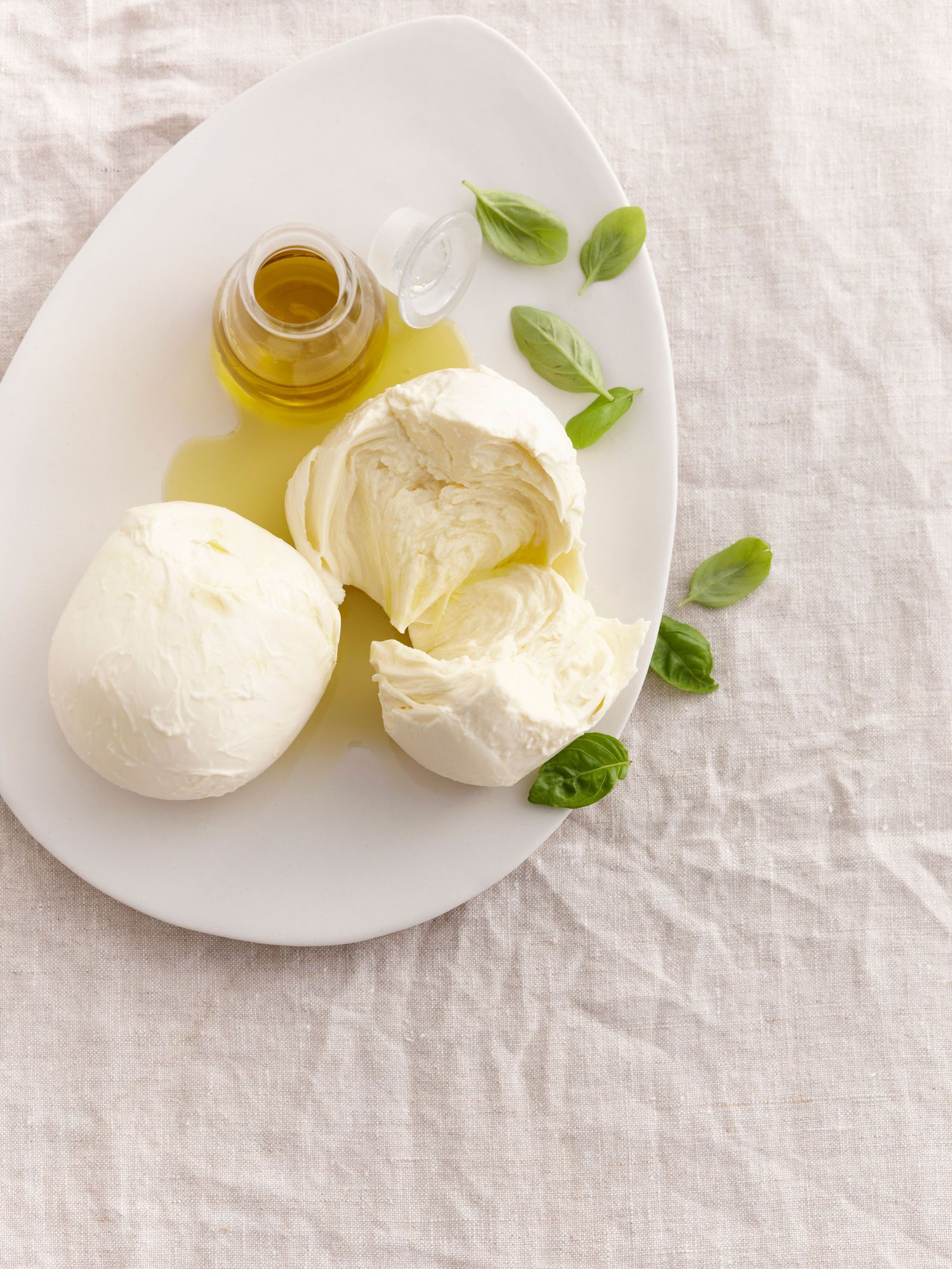When it comes to indulgent cheeses, few can rival the rich and creamy allure of burrata. This soft, mozzarella-like cheese is a delicious variation that has become a sensation in both casual and fine dining. Its delicate, velvety texture and fresh, mild flavor make it the perfect addition to a wide variety of dishes, from salads and pizzas to pastas and even as a stand-alone appetizer. As the demand for premium dairy products and Mediterranean-inspired flavors grows, so does the popularity of burrata. But what is it that makes burrata so irresistible to chefs and diners alike?
What Is Burrata Cheese?

At first glance, burrata might look like a regular mozzarella ball. However, upon cutting into it, you’ll discover the magic hidden inside—a creamy, rich center that spills out like liquid silk. Burrata is made from fresh mozzarella that is traditionally filled with a mixture of cream and sometimes extra mozzarella, giving it a unique consistency that is both soft and creamy. The outer layer is firmer than the inside, which melts in your mouth, offering a combination of texture and flavor that’s unparalleled in the world of cheese.
This fresh cheese is typically made from cow's milk, although buffalo milk is also used in some cases, offering a slightly different taste profile. Burrata originates from the Puglia region in southern Italy, where it was first created in the 1920s. The name “burrata” is derived from the Italian word "burro", meaning butter, which perfectly describes the rich, buttery texture of the cheese.
While it is a relatively recent addition to mainstream menus in the U.S., burrata has become a beloved staple in restaurants of all types. Its luxurious, creamy texture makes it the ideal choice for chefs looking to elevate their dishes, adding a decadent element that is both indulgent and sophisticated.
Why Is Burrata So Popular?

Burrata's popularity can be attributed to a few key factors that have emerged in recent years. First and foremost, there is a growing demand for premium dairy products. Consumers are becoming more discerning about the quality of the food they eat, and many are turning to fresh, high-quality cheeses like burrata to enhance their meals. The rise of Mediterranean-inspired cuisine, with its emphasis on fresh ingredients and simple yet flavorful combinations, has further contributed to burrata’s rise in popularity.
Additionally, the health-conscious food movement has played a role in the cheese's success. While cheese, in general, is often seen as a rich indulgence, burrata offers a balance of richness and freshness that allows it to be incorporated into lighter, more vibrant dishes. It pairs beautifully with seasonal produce like tomatoes, figs, arugula, and peaches, making it an ideal choice for restaurants offering farm-to-table dishes that highlight fresh, local ingredients.
Burrata also offers versatility on the menu. It can be used in both warm and cold dishes, and it pairs well with a wide variety of flavor profiles, from savory to sweet. It can be served as an appetizer on its own, paired with a drizzle of olive oil and a sprinkle of sea salt, or used as the star of a more complex dish like a pizza or pasta. Its ability to complement and enhance both simple and complex flavors makes it a favorite among chefs, particularly those working with Mediterranean, Italian, and contemporary American cuisines.
Burrata’s Growing Presence in Restaurants

According to recent data from market research firm Datassential, burrata is now featured in 8.6% of U.S. restaurant menus. This represents a more than 30% increase over the past four years, a clear indication of the cheese’s increasing popularity. As more consumers seek out fresh, high-quality ingredients, burrata’s place on restaurant menus continues to grow. It has found a home in a range of dining experiences, from high-end gourmet restaurants to trendy casual eateries.
Interestingly, awareness of burrata is particularly high among vegetarian and Asian consumers. For vegetarians, burrata provides a creamy, indulgent alternative to meats, making it an ideal addition to salads, pasta dishes, or even pizza. Many vegetarians are drawn to its rich texture and mild flavor, which pairs well with a wide variety of vegetables and grains. As for Asian consumers, burrata's creamy texture and versatility make it a natural fit for fusion dishes that combine Mediterranean flavors with those of Asia, further expanding its appeal.
Menu Trends with Burrata
Chefs and restaurateurs have come up with endless ways to feature burrata on their menus. One of the most popular ways to serve it is as part of a salad, where its creamy texture contrasts beautifully with fresh greens, ripe tomatoes, and seasonal fruits. A classic combination is burrata with heirloom tomatoes, drizzled with extra virgin olive oil, balsamic vinegar, and a sprinkle of sea salt—a simple yet elegant dish that lets the cheese shine.
In some places, you’ll find burrata paired with grilled peaches or figs, adding a touch of sweetness to balance the cheese’s rich creaminess. Arugula, with its peppery bite, often accompanies the dish, creating a satisfying contrast to the smooth, luxurious texture of the burrata. These kinds of combinations are perfect for summer, when fresh produce is at its peak, but can easily be adapted for year-round dining.
Burrata also works wonders as a topping for pizza, especially when paired with seasonal vegetables like roasted zucchini, eggplant, or butternut squash. In fact, burrata has become the new trend for pizza toppings in many modern pizzerias. Instead of using traditional mozzarella, chefs are adding dollops of fresh burrata to their pizzas after baking, allowing the cheese to soften slightly and become even creamier as it melts into the other ingredients. The result is a pizza that feels both fresh and indulgent, a true crowd-pleaser.
In the realm of pasta, burrata is often paired with spaghetti, ravioli, or gnocchi, where its creamy interior can be incorporated directly into the pasta sauce. It’s also used as a filling for stuffed pasta, such as ravioli or tortellini, adding richness and a luxurious texture to the dish. Chefs love how burrata elevates the flavor profile of pasta dishes, creating a more indulgent experience without being overly heavy.
Burrata in the Seasonal Context

Part of burrata’s growing popularity is due to its ability to be paired with seasonal produce. During the summer months, when tomatoes, berries, and stone fruits are in abundance, burrata is the perfect companion. But its appeal doesn’t end there. In the fall, burrata can be served alongside roasted root vegetables like beets, sweet potatoes, and butternut squash, offering a creamy contrast to the rich, earthy flavors. It also pairs wonderfully with autumn fruits like apples and pears, adding a creamy, tangy element to fall-inspired dishes.
In the winter, burrata’s comforting richness makes it the perfect addition to hearty pastas or served alongside roasted meats like lamb or beef. Its creamy interior offers a refreshing contrast to the richness of winter ingredients, making it an ideal choice for seasonal menus that aim to bring both comfort and luxury to the table.
Burrata: A Cheese for Every Occasion
Whether it’s served as an appetizer, incorporated into a pasta dish, or used to elevate a pizza, burrata is a cheese that can add a touch of elegance and indulgence to any meal. Its growing popularity is a testament to the increasing demand for fresh, premium ingredients and a desire for flavors that feel both luxurious and accessible. For restaurants looking to keep their menus fresh and exciting, burrata is a perfect choice—its versatility, rich texture, and creamy flavor make it a cheese that’s sure to impress.
As we continue to explore new culinary horizons, burrata is likely to remain a favorite, whether it’s paired with fresh summer produce or used in a comforting winter dish. For diners, it represents the perfect balance of luxury and simplicity—a cheese that brings a touch of indulgence to any meal.
